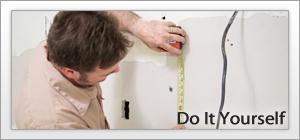HOW GYPSUM BOARD IS MANUFACTURED
Natural gypsum is a mineral and is extracted by quarrying or mining veins of ore that occur near the earth’s surface. Synthetic gypsum is a by-product primarily from the desulfurization of flue gases in fossil-fueled power plants. Both natural and synthetic gypsum are calcium sulfate (CaSO4 • 2H20). They have the same general chemical composition.
Prior to the 1980s, virtually all the gypsum used to manufacture gypsum board and
gypsum plaster was natural gypsum. While the technology to create synthetic gypsum was developed in Europe in the 1930s and scattered references to its existence are found in industry records prior to World War II, the wholesale use of synthetic gypsum to manufacture gypsum board did not occur in the U.S. until the 1980s.
One hundred pounds of gypsum contains approximately 21 pounds (or 10 quarts) of chemically combined water. To initiate the manufacturing process, natural gypsum rock or synthetic gypsum is crushed to a powder. The powder is heated to about 350 degrees F, driving off three fourths of the chemically combined water in a process called “calcining.” The calcined gypsum (or hemihydrate) is then used as the base for gypsum plaster, gypsum board, and other gypsum products.
To produce gypsum board, the calcined gypsum is mixed with water and additives
to form a slurry that is fed between continuous layers of paper on a board machine. The paper edges of the board are machine- wrapped as the face and back paper become chemically and mechanically bonded to the gypsum core.
As the board moves down a conveyor line, the calcium sulfate recrystallizes or rehydrates, reverting to its original rock state. The board is then cut to length and conveyed through dryers to remove any free moisture.
Subsequent to drying, board is inspected and trimmed to its final length. Individual boards are placed face-to-face in pairs to form a two-sheet “book.” The cut ends of the book are bound together with end bundling tape and the board is then prepared for storage or shipping.




